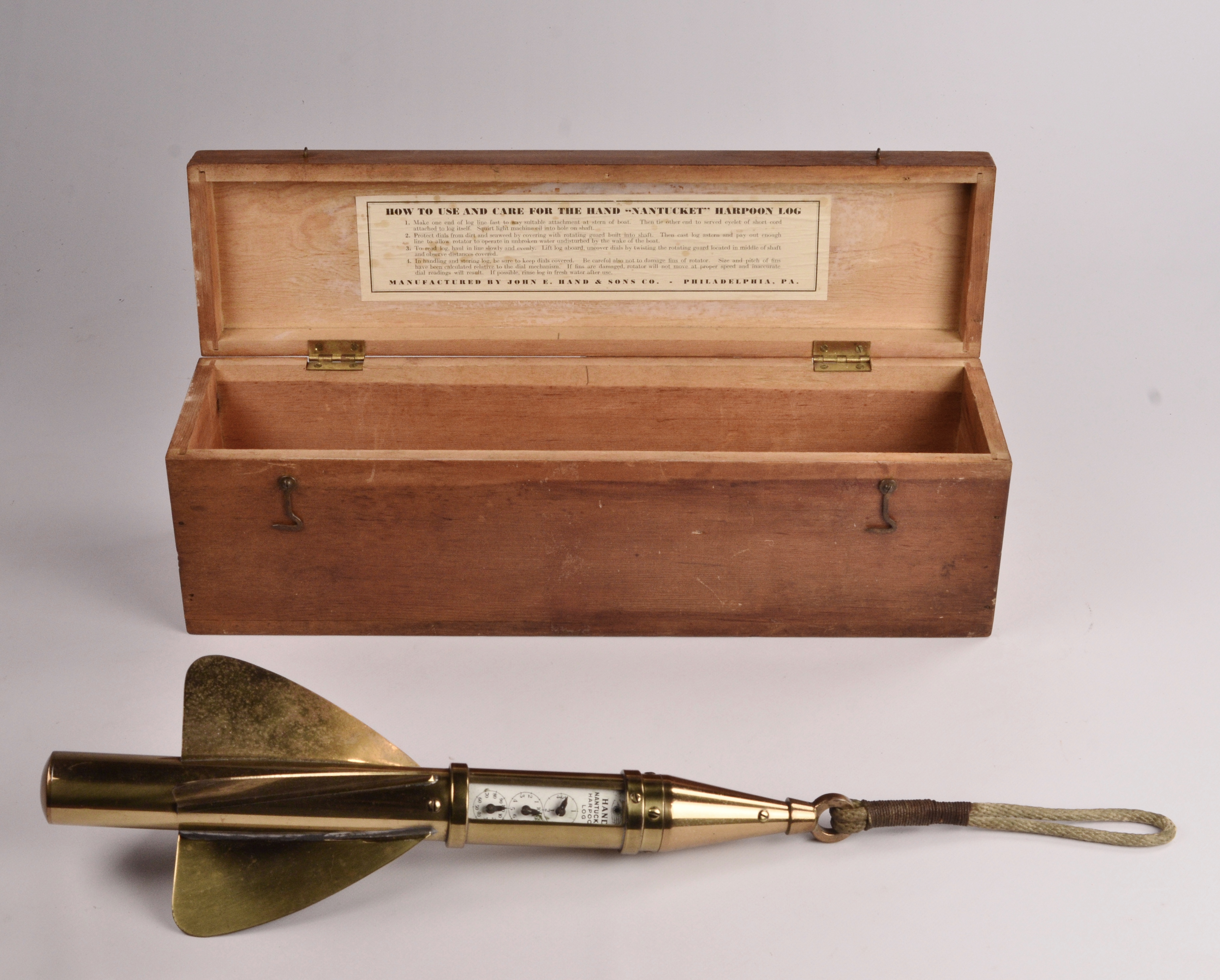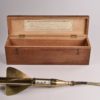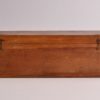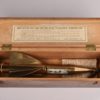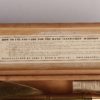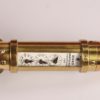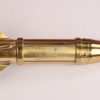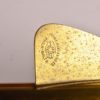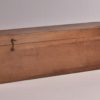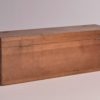Description
From the 17th century onwards people had made many attempts to devise a mechanical log which would automatically record the ships distance done. Edward Massey invented a mechanical log in 1802 with four blades which was used by the Admiralty from 1807-1815. As the rotator was dragged behind the ship then the log rotated and the revolutions were transformed in miles on the dials, to be read after the rotator was brought in. The design of Massey was further refined by Thomas Walker and Son, who took out a patent for the A1 Harpoon Log in 1861.
John Hand & Sons, instrument makers in Philadelphia from 1872 made this log as a copy of the Walker’s A2 harpoon log. On the log there are three dials, the first registers the miles up to 100, the second registers the units up to 10 mile, the third registyers quarters of a mile. One of the four rotator blades is stamped with the Hand trademark, a compass card on a hand with JOHN E. HAND & SONS PHILA – BALTO.
The case is made of pine. In it two pages of The New York Times of December 13, 1976.
Date: 1880 – 1890
LD: 46,5x16cm (18.2×6.2 in)
LDW case: 17x53x13,5 cm (6.8x21x5.2 in)
Signed: HAND NANTUCKET HARPOON LOG under a hand with a
compass card
Origin: USA
Condition: good and complete, unused
Archipel International Maritime Gallery – www.archipel-img.com
Nautical Instruments – Old Globes – Sea Charts
Ask the Dealer
Dealer information
 Archipel
Archipel
Welcome to the catalogue of Archipel International Maritime Gallery, specialist in nautical antiques and collectables.
Archipel International Maritime Galery in the Netherlands, sets itself to maritime objects, globes and sea charts of before 1900. The managing director worked as officer with the mercantile marine and the Royal Navy. As curator he was connected to one of the University Museums in the Netherlands. As seaman and curator he has a lot of knowledge of naval history. The entire Archipel collection can be found at the site Archipel-img.com.




